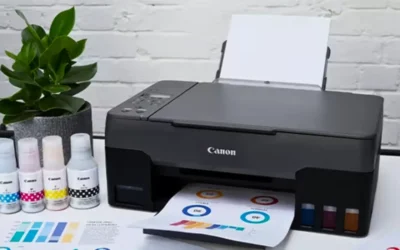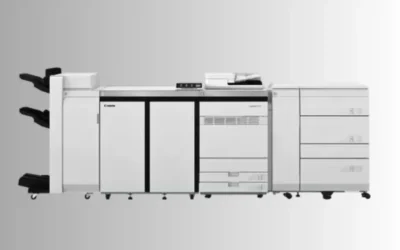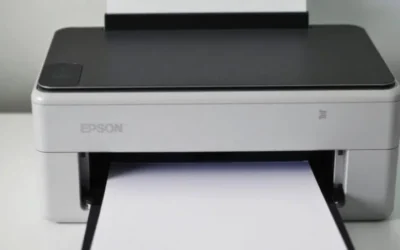The Future Of Printing Technology: From Digital To 3D Printing
Printing technology has evolved since the days of the Gutenberg press. If the pattern persists it is fair to say that looking further down into the 21st century, this evolution of printing will only get more surprising and push the boundaries even further.
Combining the tremendous changes in traditional publishing brought on by digital printing with advances in 3D-printed sneakers certainly offers an exciting realm of possibilities for the future of print technology. Here, we explore the future of printing technology as we move from the digital to 3D printing world and how they might shape potential outcomes in different sectors. So, let’s get started!
The Evolution of Printing Technology
Printing technology has evolved significantly over time. The 15th-century invention of the printing press has changed the way information was disseminated marked a pivotal moment, making books and other printed materials widely accessible
for the first time in history.
In the 20th Century, the invention of digital printing was another significant milestone. With digital printing, a new world of fast, quality print was opened up that could be easily customized and with on-demand printing, mistakes were fewer and waste reduced.
Current Trends in Digital Printing
Digital printing remains a cornerstone of the printing industry. Its power to produce high-quality prints quickly and affordably has made it indispensable in various sectors, from publishing to packaging. Key trends in digital printing include:
- Personalization: The ability to customize prints for individual needs.
- Sustainability: Eco-friendly inks and recyclable materials.
- Efficiency: Faster turnaround times and reduced waste.
- Versatility: Compatibility with different types of materials and formats.
The Future of Printing Technology 3D Printing
Additive manufacturing, commonly known as 3D printing, is an innovative technology that constructs three-dimensional objects by stacking layers of material according to digital designs.This method contrasts with traditional subtractive manufacturing, where materials are removed to shape an object. The precision, efficiency, and versatility of 3D printing have opened up new avenues for innovation across multiple industries.
3D Printing: Future of Manufacturing
A key advantage of 3D printing lies in its ability to revolutionize the manufacturing industry. The 3D printing future of manufacturing is bright, with several key benefits:
- Customization: 3D printing creates highly customized products tailored to specific needs, which is particularly valuable in the medical and fashion industries.
- Cost Efficiency: 3D printing can lower production costs by reducing the need for expensive molds and material waste.
- Speed: Prototyping and production processes can be significantly faster, speeding up innovation cycles.
- Complexity: 3D printing is capable of creating intricate shapes that traditional manufacturing techniques cannot easily or feasibly produce.
3D Printing Future Technology
The 3D printing technology is evolving rapidly, with several advancements on the horizon:
- New Materials: The development of new materials, including metals, ceramics, and bio-materials, is expanding the applications of 3D printing.
- Multi-material Printing: Advances in printing technology enable the use of multiple materials in a single print, creating more complex and functional objects.
- Speed and Precision: Ongoing print speed and precision improvements make 3D printing more viable for large-scale manufacturing.
- Integration with Other Technologies: Integration with AI and IoT is enhancing the capabilities and efficiency of 3D printing.
Impact on Various Industries
The future of printing technology is not just about creating better prints but also about transforming entire industries. Let’s explore how these cutting-edge developments are set to impact various sectors, revolutionizing the way we produce and interact with printed materials.
Healthcare:
In healthcare, 3D printing creates customized prosthetics, implants, and even bio-printed tissues and organs. The ability to produce patient-specific solutions quickly and affordably transforms patient care and treatment outcomes.
Automotive and Aerospace:
The automotive and aerospace sectors utilize 3D printing to quickly develop prototypes and manufacture components that are both lightweight and strong. This technology reduces production times and costs while allowing for innovative design solutions that improve performance and fuel efficiency.
Fashion and Consumer Goods:
3D printing enables designers to create intricate and personalized garments and accessories in the fashion industry. For consumer goods, the ability to quickly prototype and produce items on demand is revolutionizing how products are brought to market.
Construction:
3D printing, known as additive construction, is beginning to show its potential by creating building components and even entire structures. This technology promises to reduce construction time, labor costs, and material waste, making it a game-changer for the industry.
Challenges and Solutions
While the future of printing technology is promising, several challenges need to be addressed:
- Material Limitations: The range of materials used in 3D printing is expanding, but limitations still exist. Ongoing research and development are needed to create new materials suitable for a wider range of applications.
- Quality Control: Ensuring consistent quality in 3D-printed products is crucial, especially for industries like healthcare and aerospace, where precision is paramount. Advances in quality control technologies and standards are essential.
- Cost: While 3D printing can be cost-effective, the initial investment in high-quality 3D printers and materials can be significant. As 3D printing technology continues to proliferate, it is anticipated that costs will lower.
- Regulation and Standards: The regulatory environment for 3D printing is still developing. Clear standards and regulations will be necessary to ensure safety and reliability in critical applications.
Why Choose TENAUI Middle East for Your Printing Needs?
As the future of printing technology evolves, partnering with the right supplier is crucial. TENAUI Middle East, a leading wholesale supplier in Dubai, offers the latest Canon, Epson, and Ricoh printers, and Canon copiers at the best prices, being the exclusive regional distributor for Canon, Epson, INNOVA, and NORITSU.
TENAUI goes beyond supplying products; they provide comprehensive support from sales to maintenance, ensuring your equipment runs efficiently and cost-effectively. Their extensive range includes:
- Epson Printers: Reliable and high-quality.
- Epson SURELAB Printers: Ideal for photo labs and print shops.
- Canon Inkjet Large Format Printers: Perfect for high-resolution prints.
- Mitsubishi Dye Sublimation and Event Printers: Great for events.
- Canon ImagePress: For high-volume printing.
- Canon CAD and Plotter Printers: For precise, detailed prints.
FAQs About The Future of Printing Technology
How is artificial intelligence (AI) expected to influence the evolution of printing technology?
AI enhances print quality through automated adjustments, predictive maintenance, and real-time monitoring, improving efficiency and reducing errors in traditional and 3D printing processes.
How will sustainability be addressed in the future of printing technology?
Sustainability is addressed through eco-friendly inks, recyclable materials, energy-efficient printers, and waste reduction processes. 3D printing also minimizes material waste and supports recycling efforts.
Conclusion:
The transition from digital printing to 3D printing represents a major advancement in the progression of printing technology. As these technologies advance, they will unlock new possibilities and reshape the manufacturing landscape.
Staying current with these trends and innovations is vital for businesses and individuals to maximize the potential of future printing technology advancements. Visit TENAUI Middle East to experience the future of printing technology.


